
Text copyright 2017 Aileen Ablog. Design and concept copyright 2017 Ulysses Press and its licensors. All rights reserved. Any unauthorized duplication in whole or in part or dissemination of this edition by any means (including but not limited to photocopying, electronic devices, digital versions, and the Internet) will be prosecuted to the fullest extent of the law. Published in the United States by ULYSSES PRESS P.O. Box 3440 Berkeley, CA 94703 www.ulyssespress.com ISBN: 978-1-61243-699-9 Acquisitions editor: Bridget Thoreson Managing editor: Claire Chun Project editor: Caety Klingman Editor: Lauren Harrison Proofreader: Renee Rutledge Front cover design: Michelle Thompson Cover photograph: AS Food Studio/shutterstock.com Distributed by Publishers Group West NOTE TO READERS: This book has been written and published strictly for informational and educational purposes only.
It is not intended to serve as medical advice or to be any form of medical treatment. You should always consult your physician before altering or changing any aspect of your medical treatment and/or undertaking a diet regimen, including the guidelines as described in this book. Do not stop or change any prescription medications without the guidance and advice of your physician. Any use of the information in this book is made on the readers good judgment after consulting with his or her physician and is the readers sole responsibility. This book is not intended to diagnose or treat any medical condition and is not a substitute for a physician. This book is independently authored and published and no sponsorship or endorsement of this book by, and no affiliation with, any trademarked brands or other products mentioned within is claimed or suggested.
All trademarks that appear in ingredient lists and elsewhere in this book belong to their respective owners and are used here for informational purposes only. The author and publisher encourage readers to patronize the quality brands mentioned and pictured in this book. This book is dedicated to everyone looking to make a change, or in the process of change, for better health. I applaud and congratulate you on your journey. Contents Table of Contents
Guide
Ive been overweight for the majority of my life, and I know the roller coaster of dieting all too well: Working hard, eating right, and yet always staying hungry. When I first heard of the ketogenic diet, I thought it was a crazy fad and didnt think twice about it.
It wasnt until almost a year later, when I stumbled upon it again and heard of people who followed it not only losing weight but reversing ailments such as type 2 diabetes and high-blood pressure, that I was tempted to give it a try. It sounded too good to be true, and the basis of the diet was contrary to everything I was taught. But I was overweight, borderline obese, and I knew I had to make a change or I was headed for a lifetime of medications to keep my blood pressure, blood sugars, and fats in check. Coupled with a family history of coronary disease and hypertension, the cards were stacked against me. I did some further research, and the science behind it was sound. I told myself I would give it an honest try for three months, and then Id reevaluate.
I still had doubts, so I had blood tests done along the way and knew if there was any contrary indication, I would discontinue the diet. That decision was almost two years ago, and I havent looked back. My blood work is normalin fact, its great. Ive lost close to 45 pounds on a 53 frame and feel better than ever. I dont need to lose any more weight, but Ive decided to maintain a ketogenic way of eating because I like the way I feel. Before starting the ketogenic diet, I had the great fortune of picking up an electric pressure cooker.
Since then, I have had many tasty successes and my cooking style has changed somewhat. Im happy that pressure cooking has made preparing foods for the ketogenic diet faster and easier, and I hope that you find the same too! Note: I strongly suggest you consult a medical professional who is familiar with the diet and its risks, along with your medical history, to see if this diet is suitable for you. The ketogenic diet is an ultra-low carb, moderate-protein, and high-fat way of eating. In essence, it is restricting carbohydrate intake (sugars, starches, etc.) and increasing healthy fats. This process causes the body to go into the metabolic state of ketosis, where the liver converts these fatty acids into ketones (beta hydroxybutyrate and acetoacetate) that the body uses for energy. Low-Carb versus Ketogenic General low-carb eating plans, or reducing daily carbohydrate intake to 150 to 100 grams, should not be confused with a ketogenic diet. Low-Carb versus Ketogenic General low-carb eating plans, or reducing daily carbohydrate intake to 150 to 100 grams, should not be confused with a ketogenic diet.
While a low-carbohydrate diet reduces the amount of carbs a person consumes, it may not necessarily cause the ketosis state. A ketogenic diet is considered ultra-low carb, where intake is restricted to fewer than 50 grams of net carbs (total carbs minus fiber) daily; 20 to 25 grams of net carbs is ideal, along with moderate protein (usually about 0.8 to 1.0 gram of protein per pound of lean body mass) and high fat. A typical ketogenic diet contains 75% of calories from fat, 20% of calories from protein, and about 5% of calories from carbs. Once the body has adapted to a ketogenic diet, depending on the individual, some people can increase their carb intake and still remain in the ketosis state. Benefits of the Ketogenic Diet People who have had success on a ketogenic diet have found some or all of these benefits, depending on the individual: Muscle sparing: Some other diets cause some people to experience muscle loss when cutting back caloric intake. Mental clarity, focus, and mood stabilization: The diet stabilizes mood swings without the carbohydrate/sugar highs and lows, in addition to increasing the brains ability to utilize ketones for energy rather than relying solely on glucose. Burning fat stores: By eating at a caloric deficit and utilizing fat as an energy source, the body is able to use available fat stores, reducing body fat over time. Blood sugar reduction: When carbohydrates are restricted, blood glucose and liver glycogen (chains of glucose) stores are used up, reducing blood sugar levels. Insulin reduction: In the presence of carbohydrates, the body responds by releasing the hormone insulin to control the absorption of glucose into the cells from the bloodstream. Insulin reduction: In the presence of carbohydrates, the body responds by releasing the hormone insulin to control the absorption of glucose into the cells from the bloodstream.
Without carbohydrates, there is no or very little insulin response. This can also be of particular interest for those who have become insulin resistant, meaning their body doesnt respond to insulin. Giving the body a break from insulin may increase insulin sensitivity for this group. Satisfaction: By using fats as the primary fuel source, and because fats are nutrient-dense (1 gram of fat has 9 calories), many people on a ketogenic diet feel satisfied, unlike the case with other diets that leave an unfulfilled feeling or a constant hunger. It doesnt feel like a diet: It doesnt feel like one is on a diet at all when they are able to eat richer, higher-fat, more flavorful foods than on other diets. Macro counting/weighing/tracking:


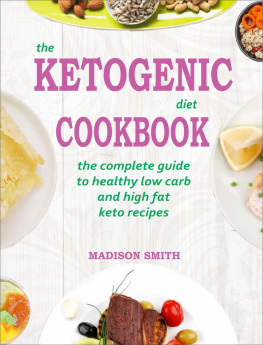
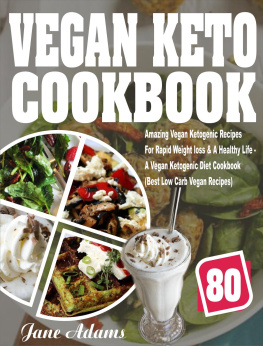
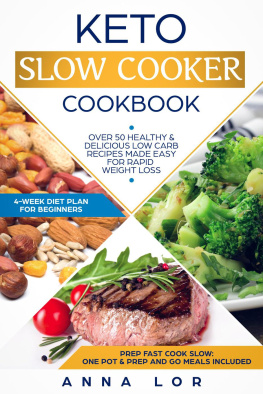

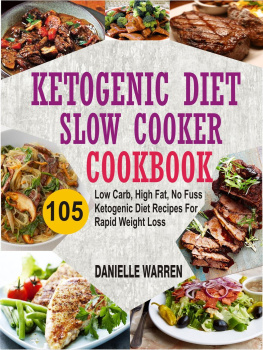
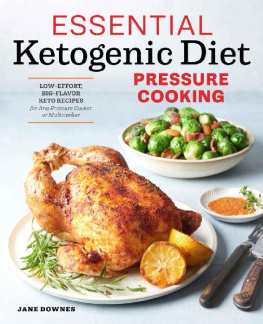
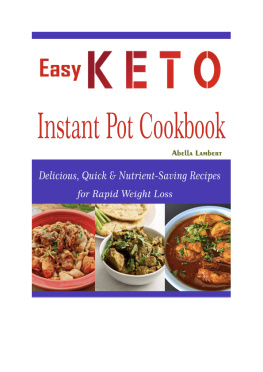

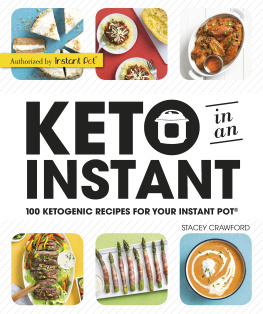
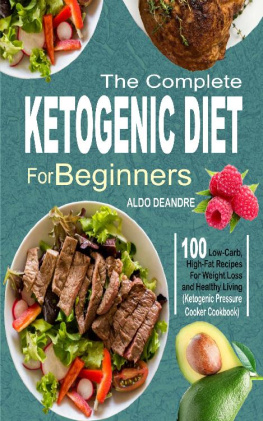
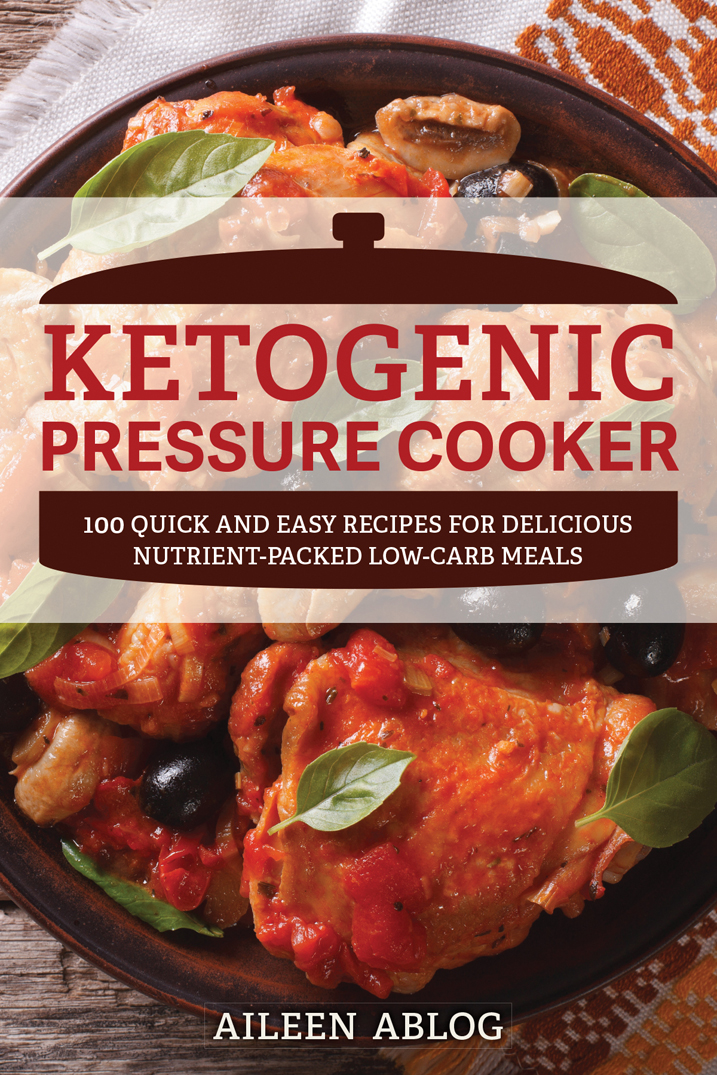
 Text copyright 2017 Aileen Ablog. Design and concept copyright 2017 Ulysses Press and its licensors. All rights reserved. Any unauthorized duplication in whole or in part or dissemination of this edition by any means (including but not limited to photocopying, electronic devices, digital versions, and the Internet) will be prosecuted to the fullest extent of the law. Published in the United States by ULYSSES PRESS P.O. Box 3440 Berkeley, CA 94703 www.ulyssespress.com ISBN: 978-1-61243-699-9 Acquisitions editor: Bridget Thoreson Managing editor: Claire Chun Project editor: Caety Klingman Editor: Lauren Harrison Proofreader: Renee Rutledge Front cover design: Michelle Thompson Cover photograph: AS Food Studio/shutterstock.com Distributed by Publishers Group West NOTE TO READERS: This book has been written and published strictly for informational and educational purposes only.
Text copyright 2017 Aileen Ablog. Design and concept copyright 2017 Ulysses Press and its licensors. All rights reserved. Any unauthorized duplication in whole or in part or dissemination of this edition by any means (including but not limited to photocopying, electronic devices, digital versions, and the Internet) will be prosecuted to the fullest extent of the law. Published in the United States by ULYSSES PRESS P.O. Box 3440 Berkeley, CA 94703 www.ulyssespress.com ISBN: 978-1-61243-699-9 Acquisitions editor: Bridget Thoreson Managing editor: Claire Chun Project editor: Caety Klingman Editor: Lauren Harrison Proofreader: Renee Rutledge Front cover design: Michelle Thompson Cover photograph: AS Food Studio/shutterstock.com Distributed by Publishers Group West NOTE TO READERS: This book has been written and published strictly for informational and educational purposes only.